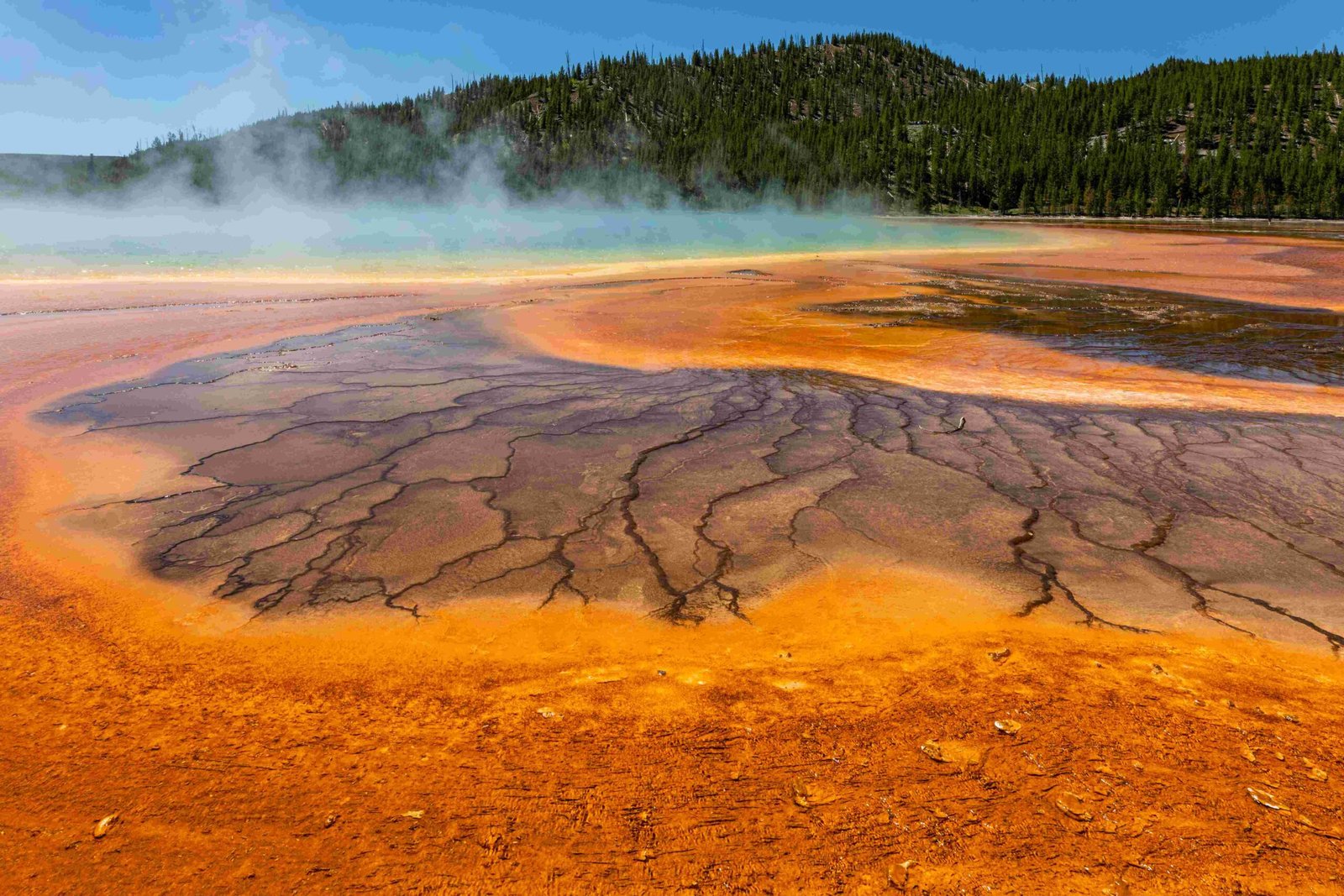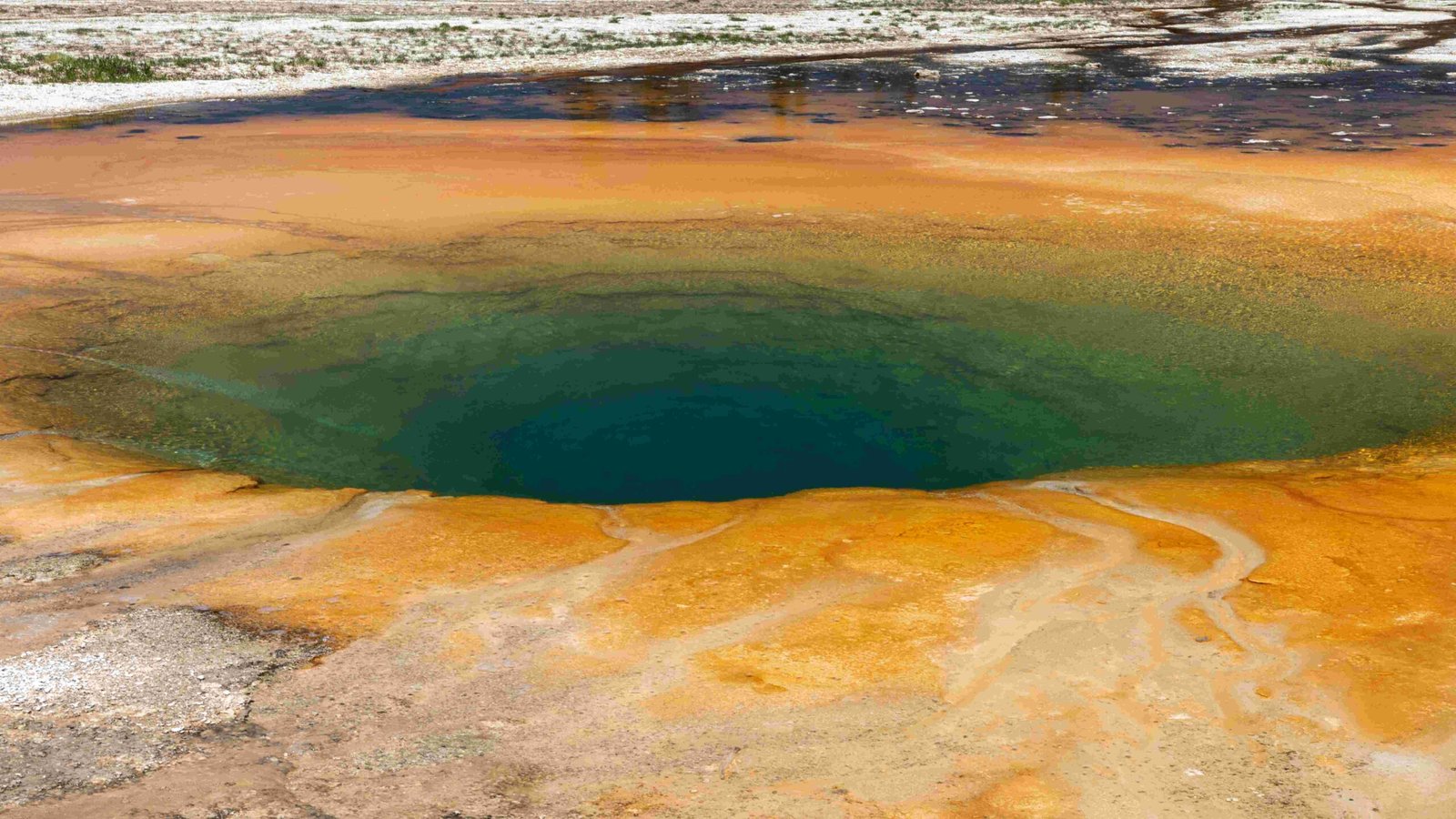Yellowstone National Park offers unique experiences in each season, making it a year-round destination. The best time to visit depends on your preferences for weather, activities, and crowd levels. Summer provides full access and warm temperatures but comes with large crowds. Spring and fall offer milder weather and fewer visitors, while winter showcases a serene, snow-covered landscape with limited access.
What Are the Characteristics of Each Season in Yellowstone?

Spring (March to May)
- Weather: Cold and unpredictable, with average temperatures in April ranging from 19°F to 47°F (-7°C to 8°C)
- Accessibility: Limited, with many roads and facilities closed until late May
- Visitor Numbers: Low, offering a quiet experience
Summer (June to August)
- Weather: Warm, with average highs between 60°F to 90°F (16°C to 32°C)
- Accessibility: Full access to all roads and facilities
- Visitor Numbers: Peak season, with over three million visitors
Fall (September to November)
- Weather: Cooler, with average highs dropping from 63°F (17°C) in September to 34°F (1°C) in November
- Accessibility: Most roads open until early November
- Visitor Numbers: Lower than summer, providing a balance of access and tranquility
Winter (December to March)
- Weather: Cold with significant snowfall, often below freezing
- Accessibility: Limited to oversnow travel in the interior
- Visitor Numbers: Lowest, offering a serene winter wonderland experience
What Are the Best Activities for Each Season in Yellowstone?

Summer Activities
- Hiking on fully accessible trails
- Wildlife viewing, especially baby animals
- Fishing in lakes and rivers (permit required)
- Boating on Yellowstone Lake
Fall Activities
- Viewing fall foliage, especially in early October
- Witnessing the elk rut in mid-September
- Hiking with milder weather and fewer crowds
- Photography of autumn landscapes
Winter Activities
- Snowshoeing on designated trails
- Cross-country skiing
- Wildlife tracking in snow
- Oversnow travel by snowmobile or snowcoach
Spring Activities
- Watching wildlife emerge from winter
- Viewing waterfalls at peak flow
- Bird watching during migration
- Early season fishing (weather permitting)
What Are the Pros and Cons of Visiting Yellowstone in Different Seasons?
| Season | Pros | Cons |
|---|---|---|
| Summer | – Full access to park – Warm weather – All activities available |
– Large crowds – Higher prices – Potential for wildfires |
| Fall | – Fewer crowds – Fall colors – Mild weather |
– Unpredictable weather – Some facility closures |
| Winter | – Unique snow-covered landscapes – Winter wildlife viewing – Fewer visitors |
– Limited access – Very cold temperatures – Many facility closures |
| Spring | – Emerging wildlife – Fewer crowds – Lower prices |
– Muddy conditions – Limited access – Unpredictable weather |
How Does Weather Affect Yellowstone Visits Throughout the Year?
Weather plays a crucial role in determining the best time to visit Yellowstone. Here’s a breakdown of weather conditions and their impact:
- Summer: Generally pleasant, but afternoon thunderstorms are common. Ideal for most outdoor activities.
- Fall: Mild early, but can turn cold and snowy by late October. Great for hiking and wildlife viewing.
- Winter: Extremely cold with heavy snowfall. Perfect for winter sports and unique landscapes.
- Spring: Unpredictable, with lingering snow and potential for sudden storms. Good for watching nature awaken.
What Are the Crowd Levels Like in Different Seasons at Yellowstone?
Understanding crowd levels can help you plan a more enjoyable visit:
- Summer (Peak Season):
- Over 3 million visitors
- Long waits at popular attractions
-
Advance reservations necessary for accommodations
-
Fall (Shoulder Season):
- Moderate crowds in September, thinning out by October
- Easier to find accommodations
-
Less crowded trails and viewing areas
-
Winter (Low Season):
- Fewest visitors
- Limited services but intimate park experience
-
Advance planning required for oversnow travel
-
Spring (Shoulder Season):
- Gradually increasing crowds
- Some areas still closed or limited access
- Good balance of accessibility and solitude
How Does Park Accessibility Change with Seasons in Yellowstone?
Accessibility in Yellowstone varies significantly throughout the year:
- Summer: All roads and facilities open, providing full access to the park.
- Fall: Most roads remain open until early November, when winter closures begin.
- Winter: Interior roads closed to regular vehicles. Access limited to oversnow travel.
- Spring: Roads gradually open from mid-April through May, with full access typically by Memorial Day weekend.
What Unique Experiences Does Each Season Offer in Yellowstone?
Each season in Yellowstone provides distinct experiences:
Summer Uniqueness
- Vibrant wildflower blooms
- Peak geyser activity
- Diverse wildlife viewing opportunities
Fall Uniqueness
- Spectacular fall foliage
- Elk rutting season
- Crisp, clear days ideal for photography
Winter Uniqueness
- Snow-covered landscapes
- Steaming geysers against snowy backdrops
- Wolf and bison sightings in Lamar Valley
Spring Uniqueness
- Newborn wildlife
- Powerful waterfalls from snowmelt
- Fewer crowds at popular attractions
By considering these factors, you can determine which season is good for going to Yellowstone National Park based on your preferences for weather, activities, and crowd levels.
References:
1. Yellowstone Park Weather and Seasons
2. Yellowstone National Park (U.S. National Park Service)
3. The 3 Best Months To Visit Yellowstone & How To Avoid The Crowds
4. Yellowstone Trip Planner
5. Yellowstone Weather

